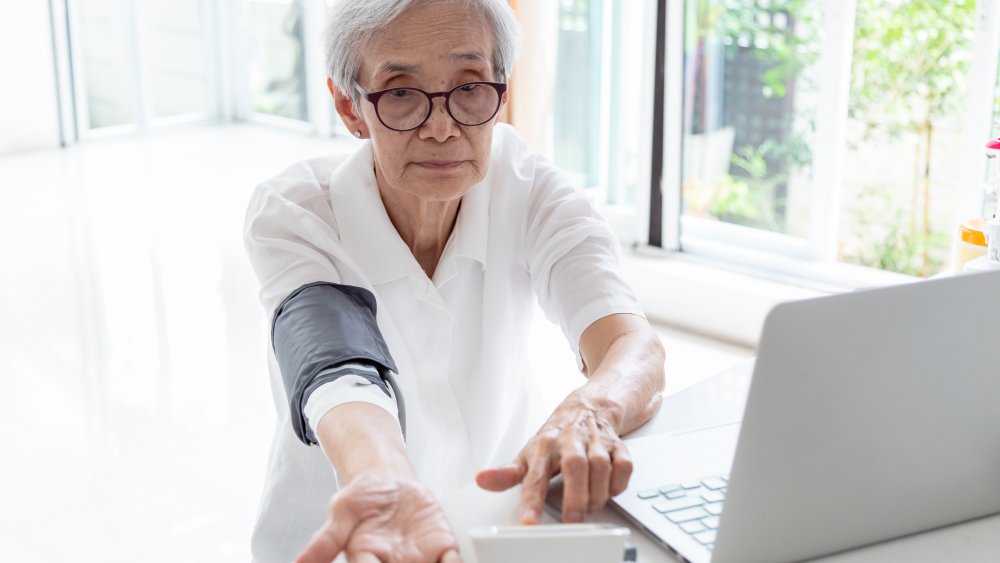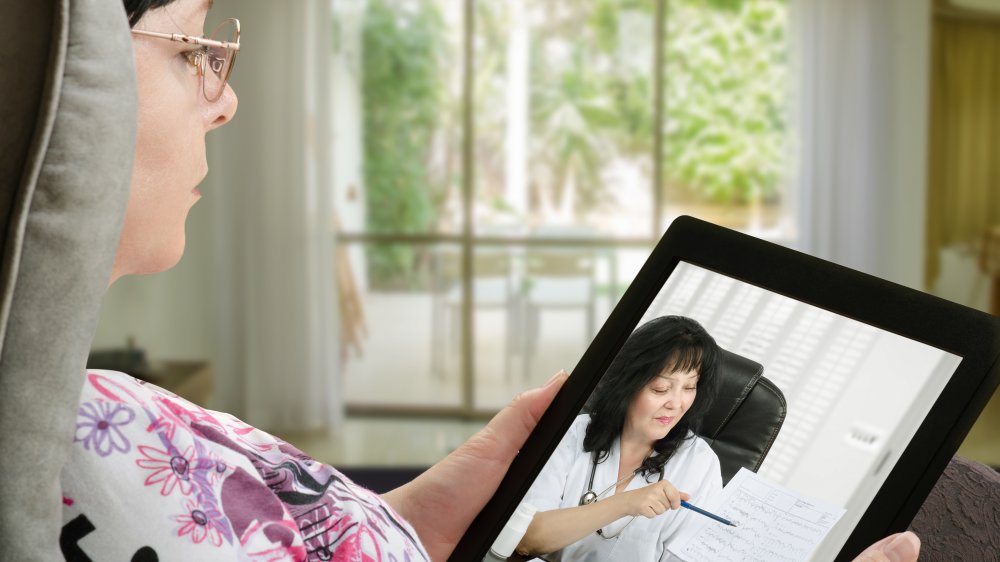A Surprising Way Telemedicine Can Improve Your Blood Pressure
While telemedicine services, where patients meet with their medical providers via voice or video chat, isn't ever going to replace in-person office visits entirely (kind of hard to set a broken bone by remote control, at least with our current technology), it's helping to bridge the gap between overworked medical practitioners and patients who have limited access to health care. One way in which telemedicine can be particularly useful is for follow-up care after a diagnosis or medical procedure. The American Journal of Managed Care reports survey findings showing that a majority of patients and their doctors found telehealth follow up visits to be just as effective as office visits, and that most patients preferred them for their convenience while providers appreciated the visits for allowing them to operate more efficiently.
Certain conditions, such as high blood pressure, require ongoing medical involvement in order to monitor their status, and that is another area in which telehealth is likely to play an increasingly large role. As a recent study published in Hypertension reports, patients with high blood pressure who receive telehealth care are showing significantly better results when it comes to getting their numbers down than those who don't have access to such services (via Health Day News).
How telemedicine helps with blood pressure monitoring
If you've been diagnosed with high blood pressure, you might be asked to use a home monitor to track your blood pressure numbers, but self-monitoring alone is ineffective in keeping those numbers down. As Dr. Karen Margolis, executive director of research at Minneapolis' HealthPartners Institute, describes the issue, "People really don't have the agency to act [on those readings] on their own," and having to wait for a doctor appointment means that any problems will go unaddressed until you're able to get in to see a doctor.
Margolis and several of her colleagues worked together to develop a telemonitoring program that automatically sent patients' home readings to a pharmacist who would regularly check in with each patient via phone. Over the course of 18 months, those enrolled in this pilot program were able to lower their blood pressure an average of 7 to 10 points. What's more, over five years they were half as likely to suffer from cardiovascular disease as the control group who only had access to standard medical care.
While telemonitoring services aren't free of charge (Margolis calculated the cost of visits to run about $1,500 per participant), they'd still be cheaper than an equal number of in-person visits if it were even possible to schedule these. What's more, the improved outcomes resulted in lower medical expenses for an estimated savings of $1,900 for each patient. Better health plus saving time and money? Sounds like a winning proposition for everyone involved.


